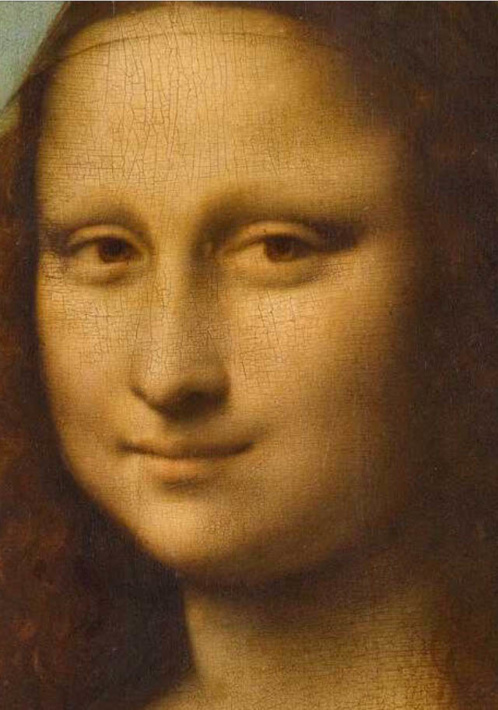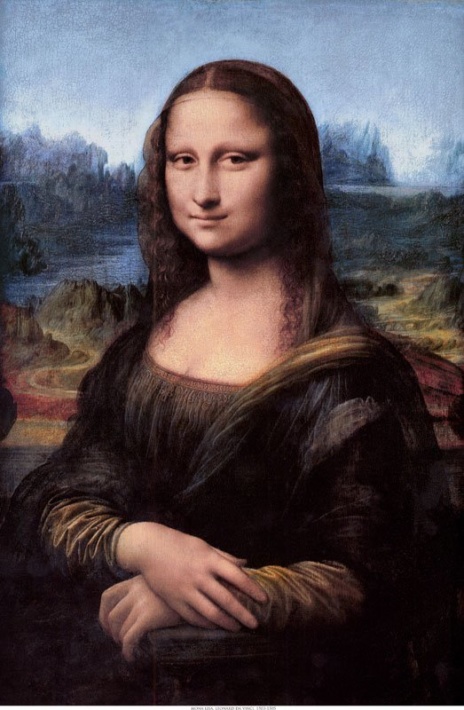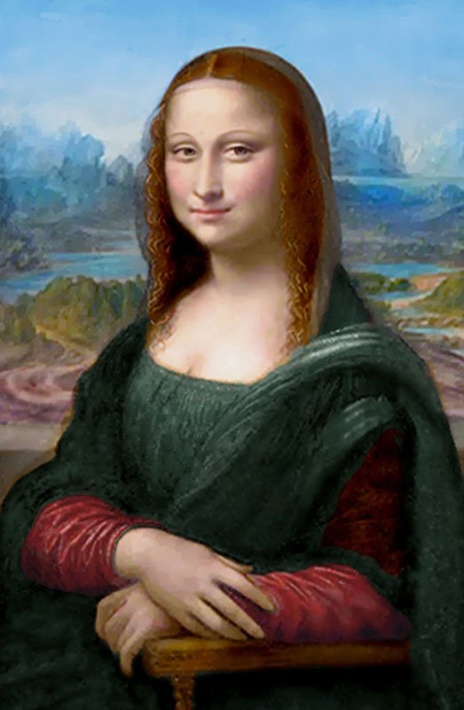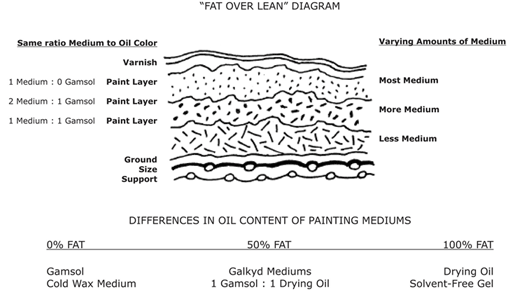Technical reasons why Mona Lisa is still here
Leonardo da Vinci (1452-1519) was a scientist and an inventor. In his mind, his remarkable abilities to perfect the oil painting techniques were secondary to his numerous other interests. That’s one of the reasons why so few da Vincis exist today. Tall, handsome, and charming Leonardo was great at building relationships and finding patrons for his military, scientific, theatre and art projects, which he rarely finished.
As an inventor, he also loved to experiment with his art materials, using new, untested methods and processes that led to a number of disasters. His greatest surviving disaster-achievement is the “Last Supper” mural painted inside a church in Milan. It began to chip off the wall during his lifetime! It happened because he disregarded the traditional fresco painting technique. Leonardo painted the picture on a dry wall instead of a wet plaster, and experimented with oil, tempera and other materials combining them in a new, untested method. The mural has endured a number of renovations since then, but only restored and computer-generated models can show us his genius: perfectly sculpted figures set in triangular sub-compositions. The admission to the museum requires multi month booking to see the mural, which attests to his long-lasting enigma.

It’s not a surprise that da Vinci experimented with “Mona Lisa” that he began working on in 1503. Obviously, this painting had held a very special place in Leonardo’s heart since it had never left his hands until his death. Da Vinci’s drawing of the figure was absolutely perfect, and his creation of a soft landscape behind her using the sfumato technique was his signature invention. I’m not going to talk about the mystery of the sitter, the beauty of this composition, or the artist’s preoccupation with the painting. There is numerous literature written about these topics. Rather I’d like to illustrate the importance of art materials used in the oil painting.
The artist played with the technical aspects of the painting itself that deteriorated its surface at a much faster pace than it normally would. The exposure to light and humidity darkened and discolored the pigments. Fine details in the face got lost as dyes mixed with the paint faded. Her brightly colored attire changed to shades of browns and black that we see today. Further applied varnishes during the early restorations darkened the painting even more, and today it has a rather colorless appearance of yellowed browns.
Italian painter, Giorgio Vasari was the first to write a comprehensive book about famous artists preceding his generation that he titled “lives of the most excellent painters, sculptors, and architects.” In his notes he reviewed the “Mona Lisa” as follows:
Georgio Vasari“The eyes had that luster and watery sheen always seen in life … the nostrils, rosy and tender, seemed to be alive … The opening of the mouth seemed to be not colored but living flesh.”
These are the words that describe the mastery of the artist that we sort of see here, only if we could take the sunglasses off to see the real colors.
So what happened to the painting? Because the artist painted on a poplar panel (soft, non-durable and susceptible to insect attacks wood) that was removed from its original frame, the surface couldn’t withstand the changes in humidity. It warped and cracked. In the 18th century the braces were added in the back of the painting to stabilize the crack, and later the added frame and cross braces helped to stop the continuous warping of the panel. Over the centuries the panel had actually shrunk!
Today you can see the painting in the Louvre that’s kept in a bulletproof glass case. It’s rather small (21×30”) and it’s hard to enjoy the beauty of it, jumping over the heads of so many tourists surrounding it with phones. To preserve the priceless artwork, this painting is kept in a climate-controlled room with a 50% (+\-10%) humidity and 18-21C (68-70F) temperature. To compensate for fluctuations in relative humidity, the case is supplemented with a bed of silica gel treated to provide 55% relative humidity (source: Wikipedia)

These are computer-generated models of the famous painting showing us true colors the Mona Lisa probably had when Leonardo had just painted it. In these models we can see the pinks and the blues that Vasari mentioned that have faded over the centuries.

Source for the images: World Mysteries at http://blog.world-mysteries.com/science/digital-restoration-of-leonardo-da-vincis-mona-lisa/ Other sources: Art history lessons | the Natural Pigments at http://www.naturalpigments.com/blog | Wikipedia at https://en.wikipedia.org/wiki/Mona_Lisa
Mona Lisa in the Louvre
If you’re interested to learn more, the Louvre museum website is a great source. Here you can see Mona Lisa up-close and personal going through the digitized images completed by the Louvre museum:
Close ups: http://focus.louvre.fr/en/mona-lisa/
Overview: http://focus.louvre.fr/en/mona-lisa/understand/most-famous-painting-world
Scientific tests: http://focus.louvre.fr/en/mona-lisa/compare/scientific-tests

11 Classical Oil painting techniques rules
If you are serious about creating permanent oil paintings, always consider using the best art materials that includes the painting substrate. the longevity of art depends on the environment you place it in. The best conditions you can set in your home or office must include:
-constant room temperature
-low humidity level
Also, don’t expose your oil paintings and especially watercolors and drawings to extreme sunlight, heat oxidation and high humidity. These are the main causes for art deterioration.
-Don’t wash the surface with water!
-Don’t paint on super smooth or glossy surfaces because the paint doesn’t stick or form a permanent bond with the substrate.
-Don’t use a lot of medium as it weakens the oil paint. Use a little bit of linseed oil to help the paint flow.
-Ideally, it’s best to paint with a lead white, no the titanium white or worse the flake white. Lead white holds everything together like a glue and minimizes cracking.
-If you don’t paint large, stick to painting on professional panels, the surface of which doesn’t fluctuate as much as canvas.
-Have strong stretcher bars and frames that keep the canvas flat and unchanged.
-Use the linseed oil to form the most durable paint film, although it may yellow more than the walnut oil. The walnut oil is also a very good medium that dries much slower then the linseed oil.
-Don’t use the oil paint that contains the safflower oil.
-Always paint on a previously dry layer!
I hope these oil painting techniques tips will help you use your art materials correctly. Learning the rules helps artists create permanent paintings that you can be proud of and confident selling!
+ Updated. First written in October, 2016.
If you’d like to receive monthly notes about my art, please click below to sign up.
Check out my art shop: https://veronicasart.com/